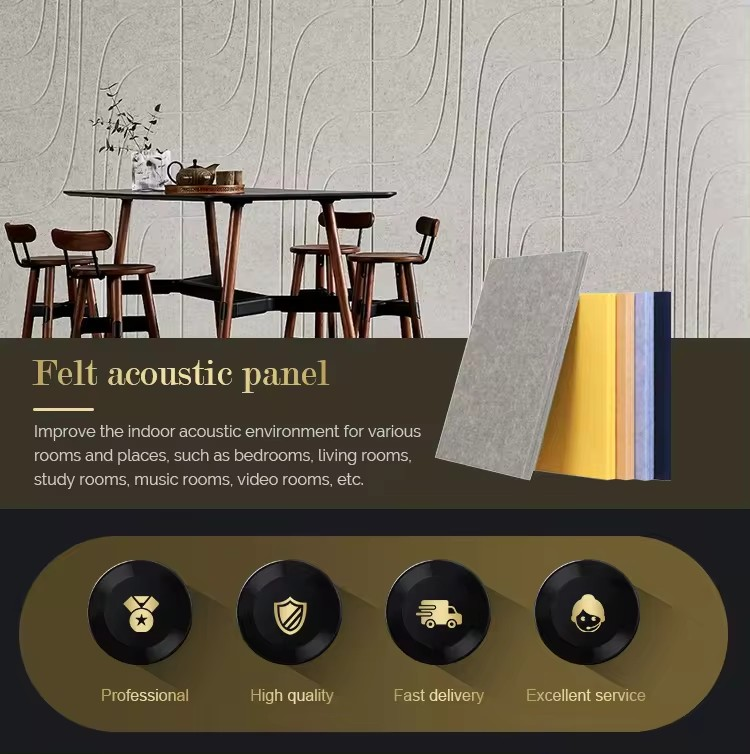The Versatile World of Acoustic Felt Fabric
In today’s fast-paced world, where noise pollution has become a pervasive challenge, maintaining a peaceful and tranquil environment is essential. This is where acoustic felt fabric emerges as a game-changer. A material that seamlessly integrates aesthetics with functionality, acoustic felt fabric has gained popularity across various industries, from interior design to automotive and beyond. In this article, we will explore the properties, benefits, and applications of acoustic felt fabric, highlighting its significance in modern-day living and working environments.
What is Acoustic Felt Fabric?
Acoustic felt fabric is a specialized type of textile manufactured from compressed fibers, often made from recycled materials. The innovative nature of this fabric allows it to absorb sound waves effectively, thus mitigating noise pollution. Unlike traditional materials that reflect sound, acoustic felt serves as a sound-absorbing medium that helps improve the acoustic environment of any space. Available in a range of colors, textures, and thicknesses, it can be tailored to suit diverse design needs.
Key Properties of Acoustic Felt Fabric
1. Sound Absorption The primary function of acoustic felt fabric is sound absorption. Its porous structure traps sound waves, particularly in the mid to high frequencies, reducing echo and reverberation. This makes it ideal for spaces requiring clarity, such as recording studios, offices, and classrooms.
2. Sustainability Many acoustic felts are made from recycled PET (polyethylene terephthalate) fibers. This not only contributes to sustainability but also aligns with growing consumer preferences for environmentally friendly products. By opting for acoustic felt, businesses can enhance their green credentials while benefiting from its functionality.
3. Fire Resistance Acoustic felt materials often come with inherent fire-resistant properties, making them suitable for commercial and residential use where safety standards are stringent.
4. Versatile Applications The versatility of acoustic felt fabric allows it to be used creatively across different applications. Whether it’s wall panels, ceiling tiles, furniture upholstery, or decorative art pieces, acoustic felt can transform the ambiance of a space while serving its primary function of sound absorption.
5. Aesthetic Appeal Available in a broad spectrum of colors and textures, acoustic felt offers architects and designers a vast canvas for creativity. It can be used to create visually appealing designs that enhance the overall aesthetic of a room, making it as much about style as it is about sound reduction.
acoustic felt fabric

Applications of Acoustic Felt Fabric
The versatility of acoustic felt fabric makes it suitable for various applications across multiple sectors
- Interior Design In residential settings, it’s commonly used in home theaters and open-concept living spaces where sound control is crucial. Acoustic felt wall panels and ceiling treatments can significantly enhance sound quality while adding a modern touch to the interior décor.
- Commercial Spaces In corporate environments, acoustic felt is used in offices to create quiet zones, break rooms, and conference areas. By reducing noise levels, it helps improve focus and productivity, fostering a better working atmosphere.
- Educational Institutions Classrooms and lecture halls benefit immensely from acoustic felt installations that enhance speech intelligibility, enabling better learning outcomes for students.
- Public Spaces Airports, train stations, and shopping malls harness the benefits of acoustic felt to minimize noise and enhance visitor experience, helping to create more pleasant environments.
- Automotive Industry Acoustic felt is also used in vehicles to reduce road noise and improve cabin acoustics, contributing to a more comfortable driving experience.
Conclusion
In a world that is often overwhelmed by noise, the importance of acoustic solutions cannot be understated. Acoustic felt fabric stands at the forefront of this movement, offering an effective and stylish way to combat sound challenges in various environments. As both a practical and aesthetically pleasing material, acoustic felt is not just a trend; it is a transformative solution that enhances our daily experiences, making spaces quieter, more comfortable, and pleasant to inhabit. In embracing acoustic felt fabric, we invest in a future where sound harmony is achievable—creating better spaces for work, learning, and living.
